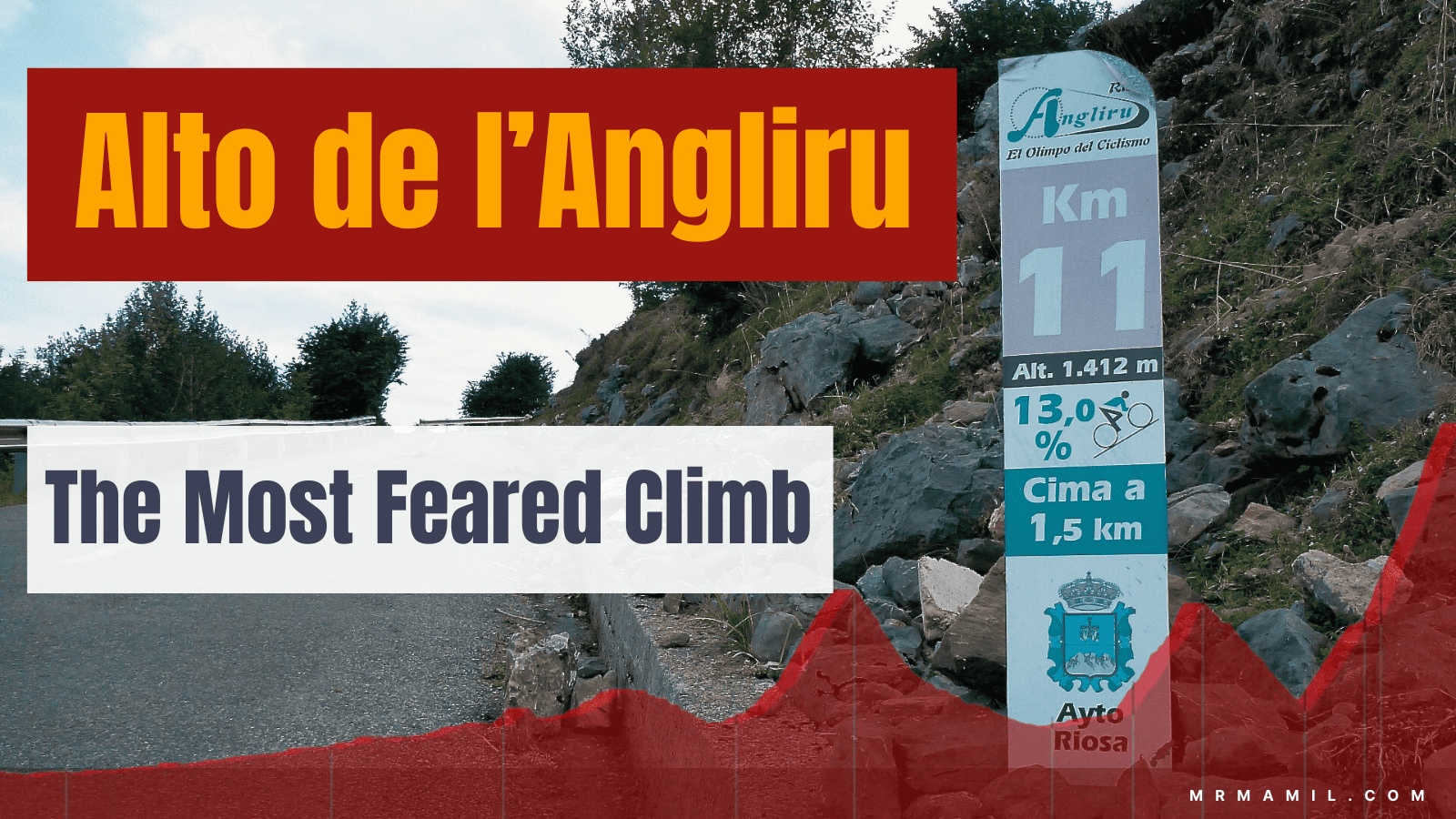
The Alto de l’Angliru is the Queen stage of the 2023 Vuelta Espana. The short 124.5km Stage 17 starts from Ribadesella along the Mediterranean coast and finishes at the summit of the Altu de L’Angliru.
The Altu de L’Angliru is one of the most feared climbs in professional cycling. Here are 13 interesting facts about the Altu de L’Angliru that will make you appreciate this beast even more.
It’s surrounded by Spain’s natural wonders

Angliru is nestled in between two of the most impressive mountain ranges in Spain.
The Picos de Europa lies to the east, and the Somiedo Natural Park is to the southwest. These natural wonders offer stunning views and diverse wildlife for those who dare to explore them.
The Picos de Europa is a UNESCO World Heritage Site that spans three provinces; Asturias, Cantabria, and León. They are home to some of the highest peaks in Spain, such as Torre de Cerredo (2,648m) and Naranjo de Bulnes (2,519m). They also host a rich variety of flora and fauna, including bears, wolves, eagles, and vultures.
The Somiedo Natural Park is another protected area that covers 291 km2 of mountainous terrain in Asturias. It is known for its glacial lakes, forests, meadows, and valleys. It is also the habitat of the largest population of brown bears in Spain, as well as other species such as deer, wild boar, otters, and golden eagles.
It’s Spain’s toughest climb
The Alto de l’Angliru is the toughest climb in Spain and one of the toughest in professional cycling. Its average gradient of over 10% and its sections of up to 24% make it a brutal climb for even the best professional cyclists.
The climb is located in the Asturias region, near the city of Oviedo. It was first discovered by a journalist named Miguel Prieto, who suggested it to the organizers of the Vuelta a España as a potential stage finish.
Since then, Angliru has become a legendary climb that has witnessed some epic battles and memorable moments in cycling history. Some of the riders who have won on Angliru include Roberto Heras, Alberto Contador, Chris Horner, and Hugh Carthy.
Vuelta España’s iconic climb
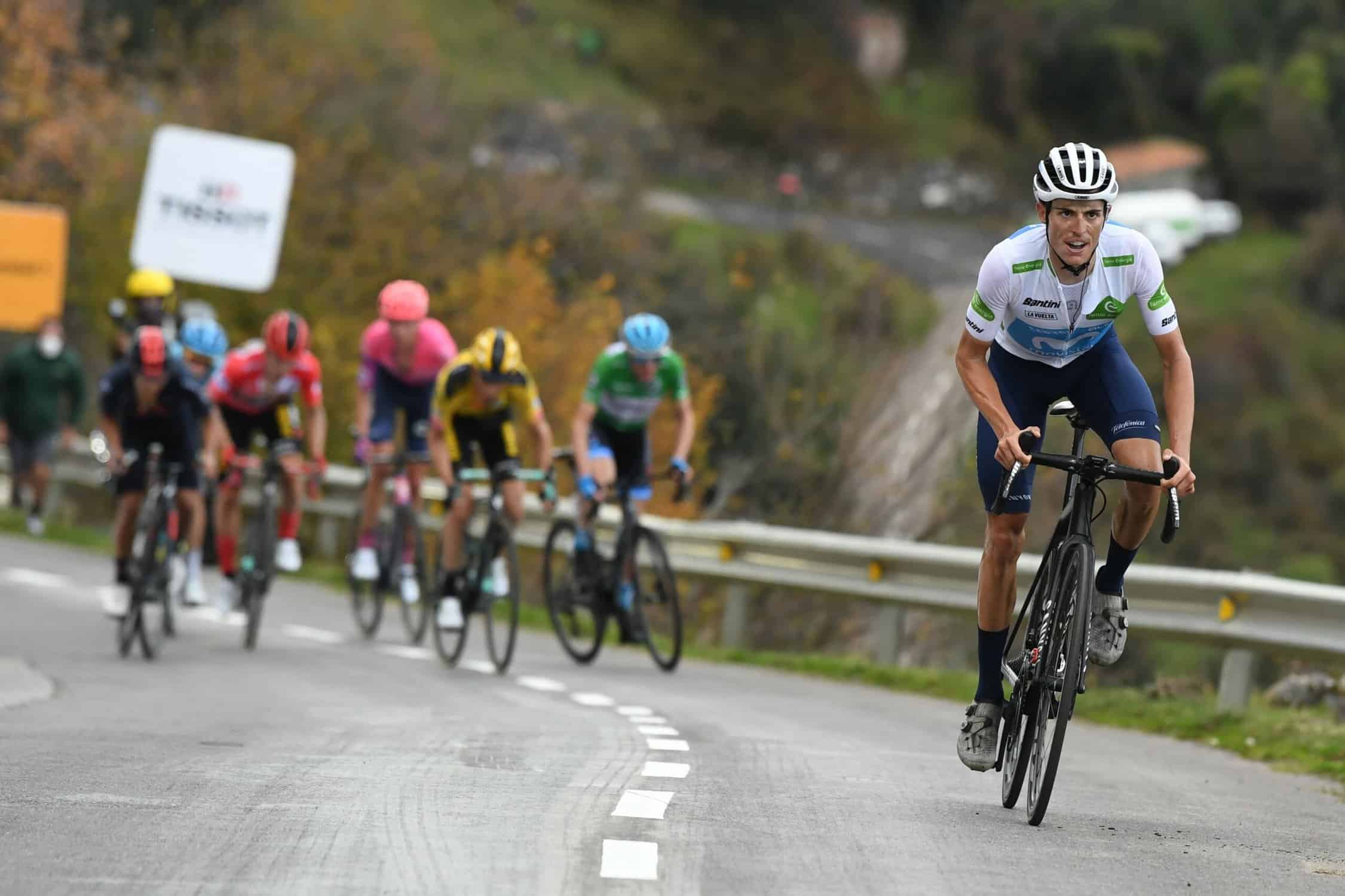
The organizers of the Vuelta a España wanted a mountain to rival the Alpe d’Huez and Mont Ventoux in the Tour de France and the Mortirolo Pass and Zoncolan in the Giro d’Italia.
They found it in Angliru, which was first included in 1999, on stage eight from León. Since then, the Angliru has featured in the Vuelta a España nine times, with the latest being Stage 17 of the 2023 Vuelta a España.
The Angliru has become a symbol of the Vuelta a España’s identity, as it showcases the toughness and unpredictability of the Spanish grand tour.
The Angliru has been the scene of some of the most dramatic and decisive moments in the Vuelta’s history, such as Roberto Heras’ comeback in 2000, Alberto Contador’s farewell victory in 2017, and Primoz Roglic’s final attack in 2020.
From dirt track to a legendary climb
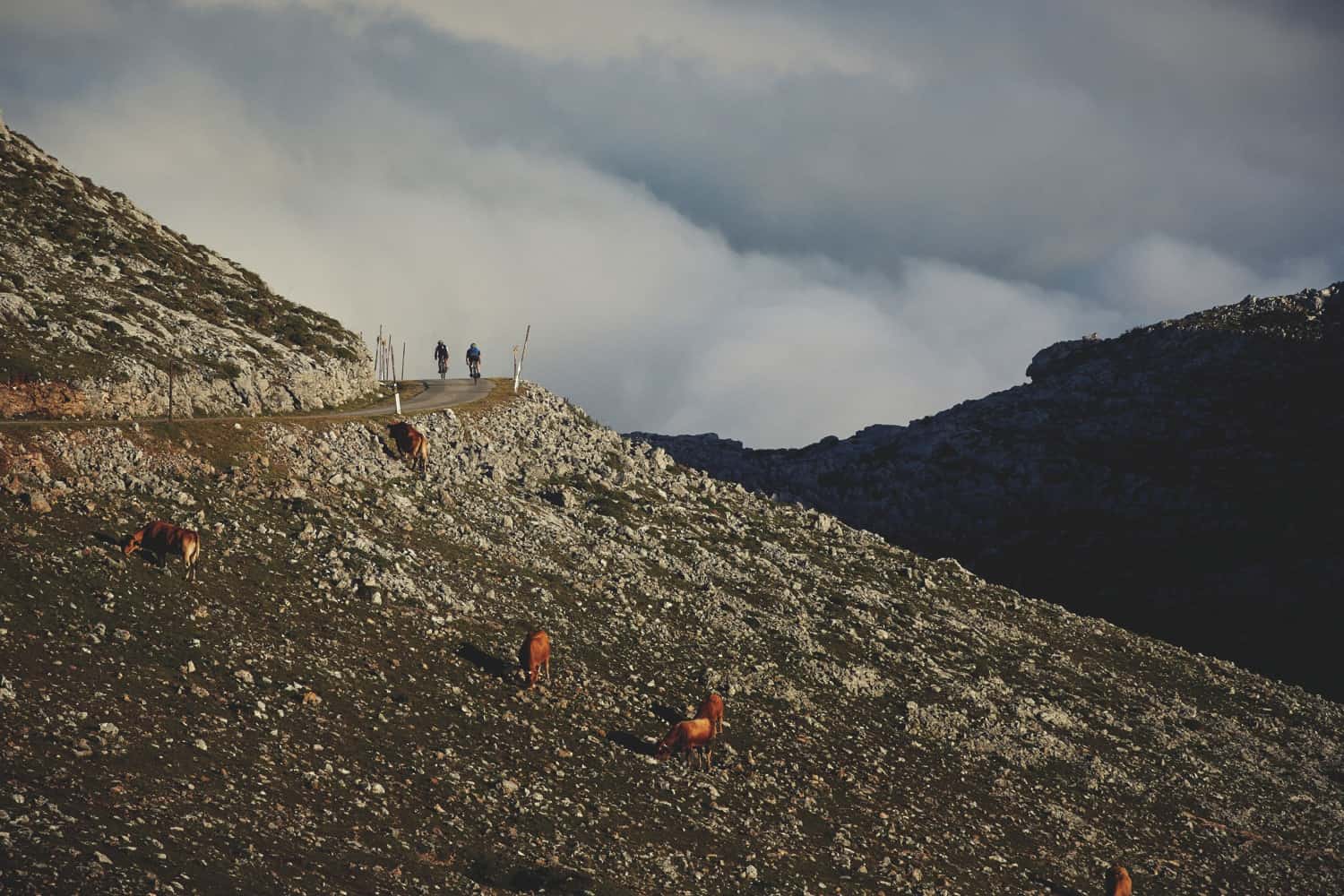
The road was built in the 1980s by the local council to improve the living conditions of the villagers who lived on the slopes of Angliru. It was a dirt track used by farmers and shepherds to access their pastures. However, the road was not maintained and soon became eroded and muddy.
The Vuelta España organizers decided to pave the road in 1999, after seeing the potential of Angliru as a spectacular stage finish. They spent 60 million pesetas (about 360,000 euros) on the project. The road was paved with asphalt, but no guardrails or signs were added.
It’s also very exposed to the weather, which can change quickly and drastically on the mountain. Today, the road is still narrow and single-lane, making it difficult for cars and bikes to share.
From steep to steeper
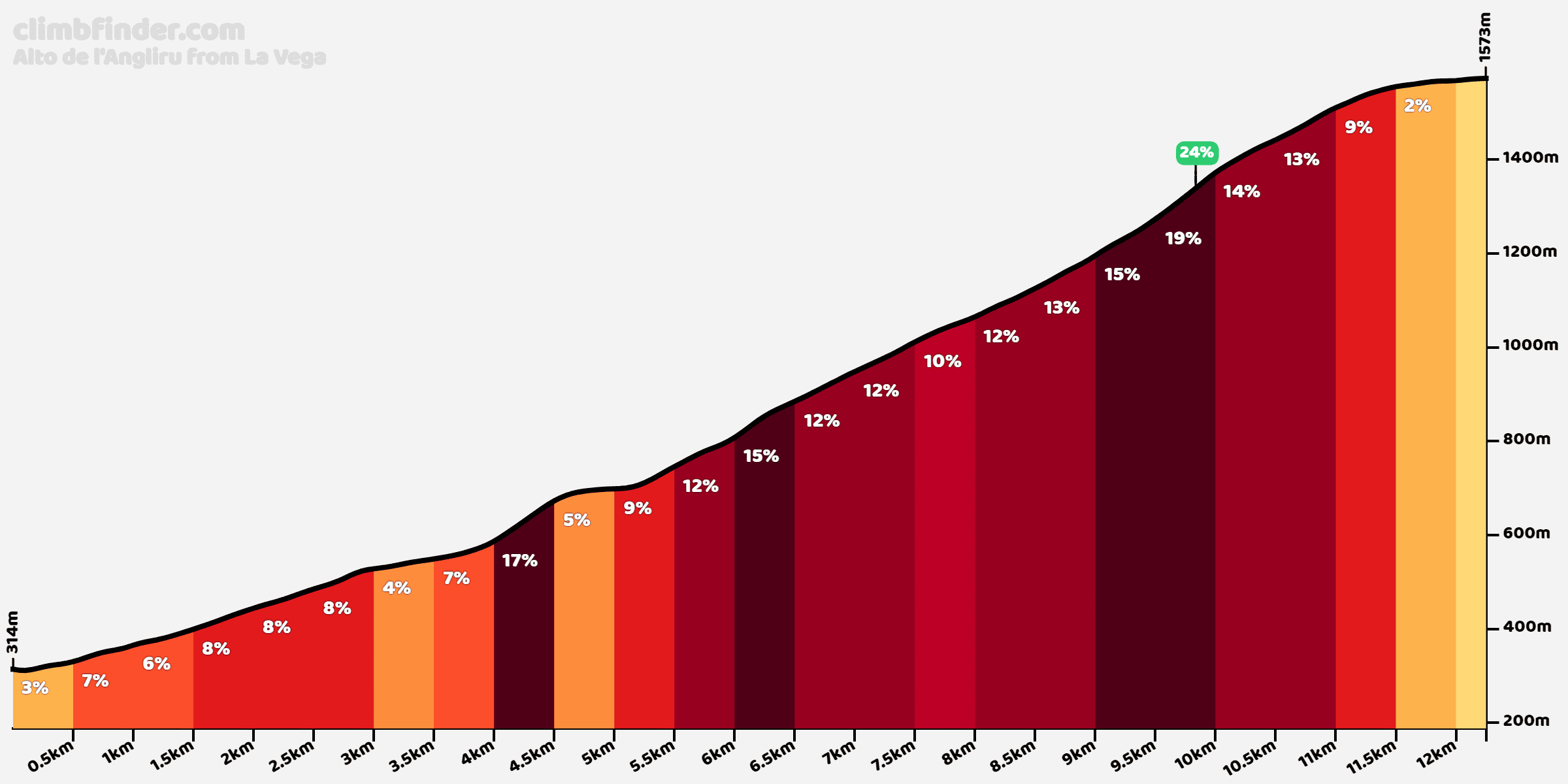
The summit of the Angliru is 1,573m (5,161 ft) above sea level. The climb has an elevation gain of 1,266m (4,154 ft) over 12.5 km (7.8 mi) long with an average gradient of 10.13%. These numbers show how demanding and relentless the Angliru climb is.
The climb starts at an altitude of 307m (1,007 ft) in the village of La Vega, where a sign warns the riders of the difficulty ahead. The first 5km (3.1 mi) are relatively gentle, with some flat and downhill sections that allow the riders to warm up and save some energy. However, after passing the village of Viapará, the road becomes steeper and narrower, and the real challenge begins.
The next six kilometers are a constant uphill battle, with no respite or recovery. The road twists and turns through the forest, with some hairpin bends and steep ramps that test the riders’ strength and skills.
The gradient varies from 10% to 24%, with some sections having names that reflect their difficulty, such as Llagos (14.5%), Les Picones (20%), Cobayos (21.5%), Cuena les Cabres (23.5%), El Aviru (21.5%) and Les Piedrusines (20%).
The Cueña les Cabres is the most infamous part of the climb, as it reaches a maximum gradient of 23.6% and lasts for about one kilometer. Many riders have to get off their bikes and walk on this section or use very low gears to keep pedaling.
The last kilometer is slightly easier, with an average gradient of 9.8%. The road emerges from the forest and offers a view of the summit, where a large banner marks the end of the climb.
Pros’ gearing choices for the Angliru

It’s no secret that many professional cyclists are scared of the Angliru. In 1999, many riders, including the great Jan Ullrich, used a triple crankset. Nowadays, most pros have the 34x34T as the lightest gear for the Angliru.
The Angliru is so steep that even a 34x34T as the lightest gear is not enough for some riders. A 34x34T gives a low gear ratio of 1:1, which makes it easier to climb while maintaining a reasonable cadence.
The choice of gearing for the Angliru depends on several factors, such as the rider’s weight, power, fitness, riding style, and preference. Some riders like to push hard on big gears, while others like to spin lightly on small gears.
Some riders like to have a wide range of gears to adapt to different situations, while others like to have a simple and consistent setup. There is no definitive answer to what is the best gearing for the Angliru, but one thing is certain; it is one of the hardest climbs in cycling, and it requires a lot of courage and skill to conquer it.
Ninth Vuelta a España appearances
The Angliru has featured in the Vuelta a España nine times, although it’s an iconic climb.
It made its debut in 1999, followed by 2000, 2002, 2008, 2011, 2013, 2017, 2020, and 2023. The 2020 edition saw Primoz Roglic win his third consecutive Vuelta a España title after beating Enric Mas on Angliru.
The Angliru has been used as a decisive stage in the Vuelta, often placed near the end of the race to create suspense and drama. The Angliru has also been the scene of some of the most memorable performances and battles in cycling history, such as:
The battleground for the Vuelta a España favorites
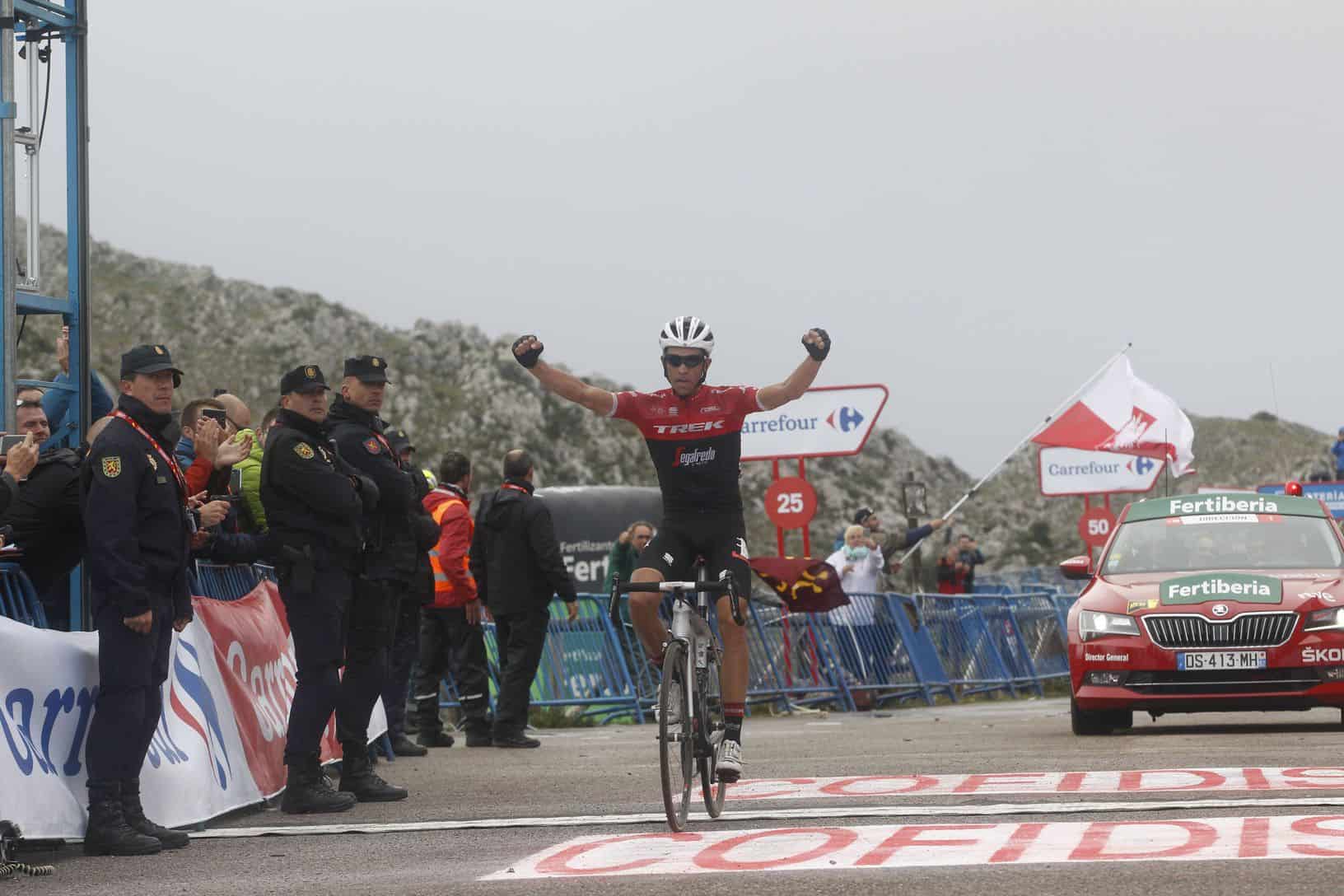
The Angliru has also been the scene of some of the most memorable performances and battles in cycling history, such as:
- In 1999, José María Jiménez became the first rider to win on Angliru. Jiménez was a climbing specialist who won nine stages and four mountain classifications in the Vuelta a España.
- In 2000, Roberto Heras set the fastest-ever time on Angliru at 41:55, after launching a solo attack on the Cueña les Cabres. He gained more than two minutes on his rivals and took the overall lead of the Vuelta, which he later won.
- In 2002, Roberto Heras won again on Angliru, after surviving the chaotic and rainy stage that saw many riders and cars stall on the climb. He also took the overall lead in the Vuelta, which he later won for the second time.
- In 2008, Alberto Contador won on Angliru, after attacking on the Cueña les Cabres and holding off a chasing group that included Alejandro Valverde and Joaquim Rodríguez. Contador described Angliru as the hardest mountain he had ever climbed.
- In 2011, Juan José Cobo won on Angliru, after resisting the attacks of Chris Froome and Bradley Wiggins on the final kilometers. Cobo secured his overall victory in the Vuelta by just 13 seconds over Froome.
- In 2013, Chris Horner became the oldest rider to win on Angliru at 41 years old, after catching and passing Vincenzo Nibali on the last part of the climb. Horner also became the oldest rider to win a grand tour by winning the Vuelta.
- In 2017, Alberto Contador won his final stage as a professional cyclist on Angliru, after attacking from far out and soloing to the finish. Contador received a standing ovation from the fans and his fellow riders for his spectacular career and his farewell victory.
- In 2020, Hugh Carthy attacked in the last kilometre to win the Stage 12.
José María Jiménez: The first conqueror of Angliru
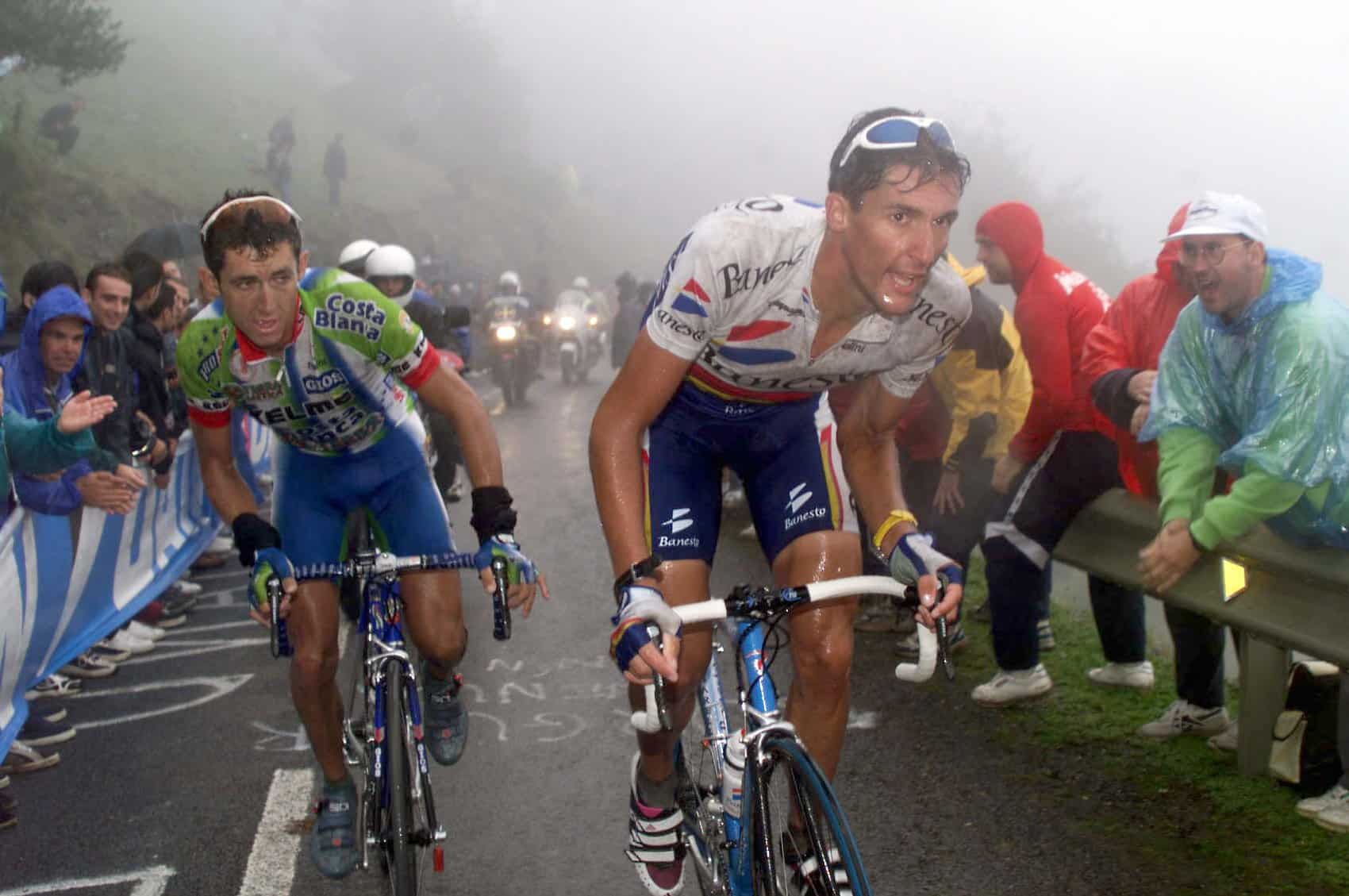
The first rider to conquer Angliru was José María Jiménez, who won after catching Pavel Tonkov a kilometer from the finish on Stage 12 in 1999.
He was also one of the most popular and charismatic riders in Spain, known for his attacking style and his emotional expressions. He was nicknamed El Chava by his fans, who adored him for his passion and courage.
Jiménez’s victory on Angliru was a remarkable feat, as he had to overcome a mechanical problem and a crash earlier in the stage. He also had to chase down Tonkov, who had attacked on the lower slopes of the climb and had a two-minute advantage at one point.
Jiménez showed his determination and skill as he rode up the steep and narrow road, closing the gap on Tonkov with every pedal stroke. He finally caught him with just over a kilometer to go and then left him behind with a powerful acceleration.
Roberto Heras: The record setter
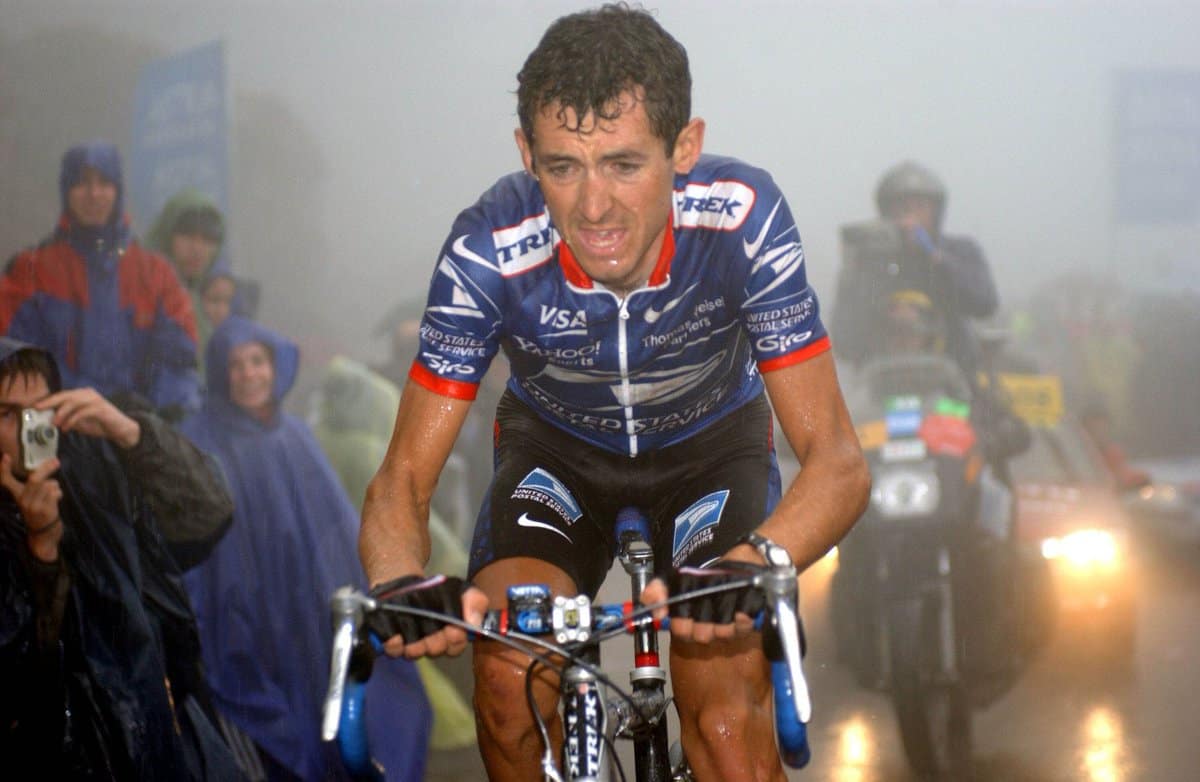
The fastest-ever recorded time was 41:55 by Roberto Heras in 2000, followed by Chris Horner (43:07 in 2013) and Alberto Contador (43:12 in 2008).
Roberto Heras was one of the best Spanish climbers of his era, who won the Vuelta a España four times (2000, 2003, 2004, and 2005). He was also a loyal teammate of Lance Armstrong in the Tour de France.
Richard Caparaz holds the fastest Strava segment time up the Angliru at 44:13, followed by Sepp Kuss (44:22) and Mike Woods (45:27). The times were set on Stage 12 of the 2020 Vuelta Espana. Hugh Carthy, who won that stage set a time of 43:34, but it wasn’t on Strava.
David Millar’s protest
Former Scottish cyclist, David Millar famously stopped a half-meter short of the finish on Angliru and refused to cross the line in protest. He was angry at the organizers for including such a hard climb in bad weather conditions. He later regretted his gesture and apologized to his fans.
Millar’s protest on Angliru happened on Stage 15 of the 2002 Vuelta a España, which was one of the most chaotic and controversial stages in cycling history. The stage was 176.7 km long, with four categorized climbs, including the Angliru as the final ascent.
The weather was cold and rainy, making the road slippery and dangerous. He was frustrated and furious at the organizers for putting such a hard climb in such bad conditions, and he decided to make a statement by stopping just before the finish line.
He would later apologize for his actions.
It’s the Mount Olympus of cycling
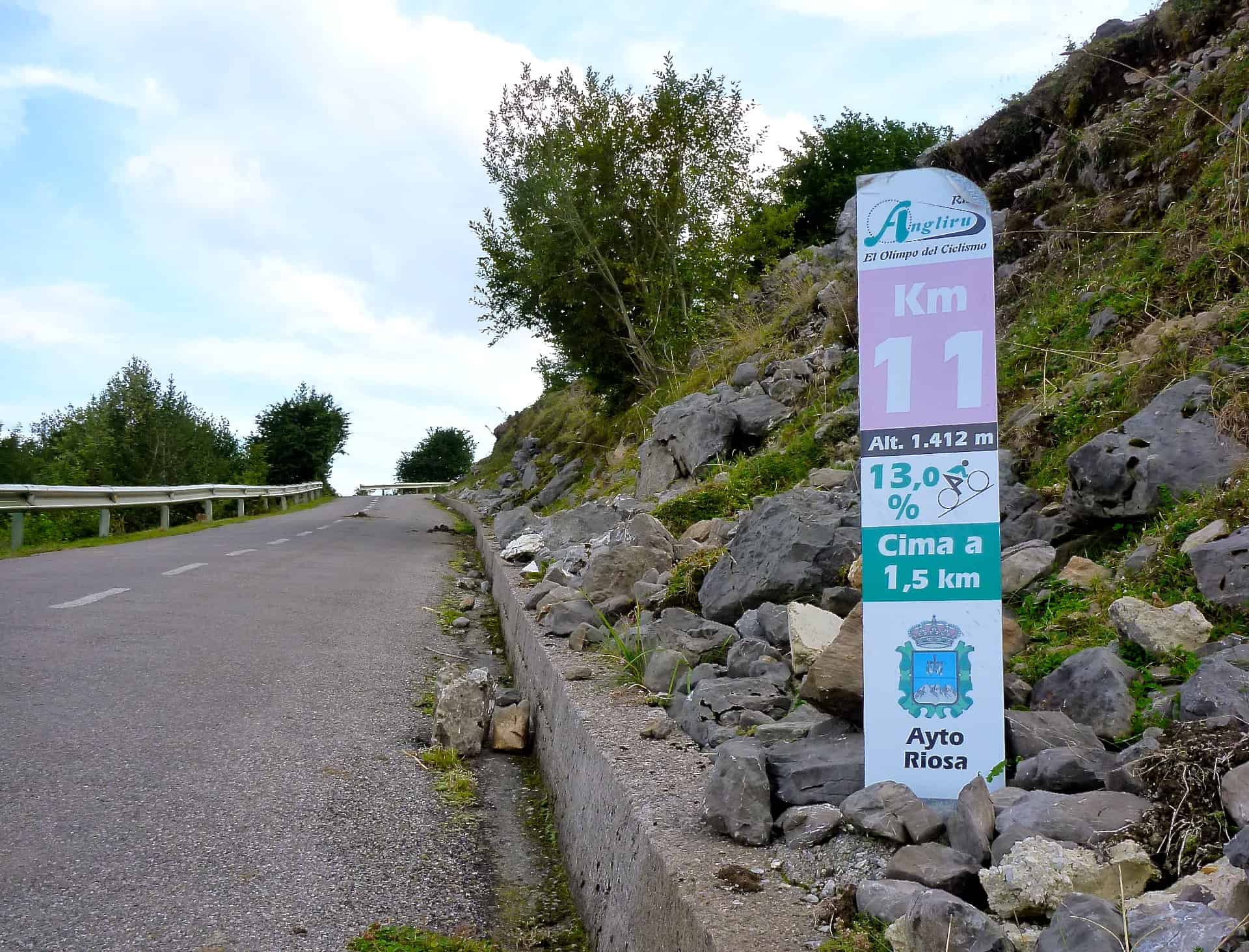
There is a sign near the beginning of the climb stating that Angliru is The Mount Olympus of Cycling. This is a reference to the mythical home of the Greek gods, which was also the highest mountain in Greece.
The sign was placed by the local cycling club, Club Ciclista Aramo, who were the first to explore and promote the climb as a potential stage finish for the Vuelta a España. They wanted to honor the difficulty and beauty of Angliru, as well as its resemblance to Mount Olympus, which has a similar height and shape.
The sign also reflects the admiration and respect that cyclists have for Angliru, as it is one of the most challenging and prestigious climbs in the world.
A spectacular view from the above
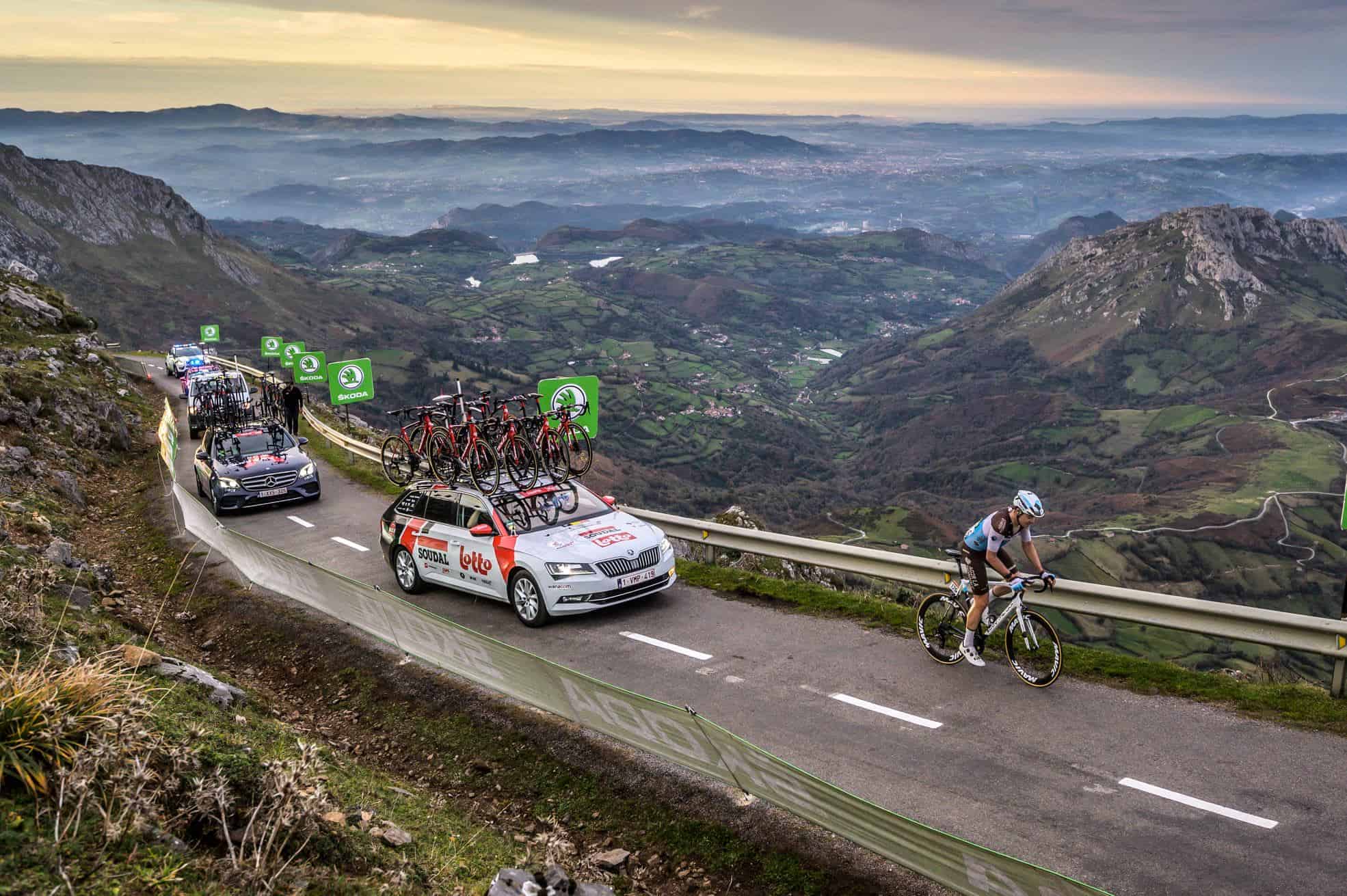
The view from Angliru is often described as looking out of an airplane. The climb offers a panoramic vista of the surrounding valleys and mountains, as well as the sea on clear days. The scenery is breathtaking and rewarding for those who make it to the top.
The view from Angliru changes as the riders ascend the mountain, offering different perspectives and landscapes.
- The first section passes through some villages and farms, with green fields and trees on both sides of the road.
- The second section enters the forest, where the road becomes narrower and darker, and the gradient becomes steeper and more irregular. The third section emerges from the forest, where the road becomes wider and brighter, and the gradient becomes more constant and less severe.
The view from Angliru reaches its peak at the summit, where the riders can enjoy a 360º panorama of the Asturias region. They can see the valleys below, with their rivers and towns, as well as the mountains around them, with their peaks and ridges.
They can also see the sea on clear days, which is about 30 km (18.6 mi) away from Angliru. The view from Angliru is one of the most beautiful and impressive in cycling, as it combines nature and culture, land and water, low and high.

Alex Lee is the founder and editor-at-large of Mr. Mamil. Coming from a professional engineering background, he breaks down technical cycling nuances into an easy-to-understand and digestible format here.
He has been riding road bikes actively for the past 12 years and started racing competitively in the senior category during the summer recently.